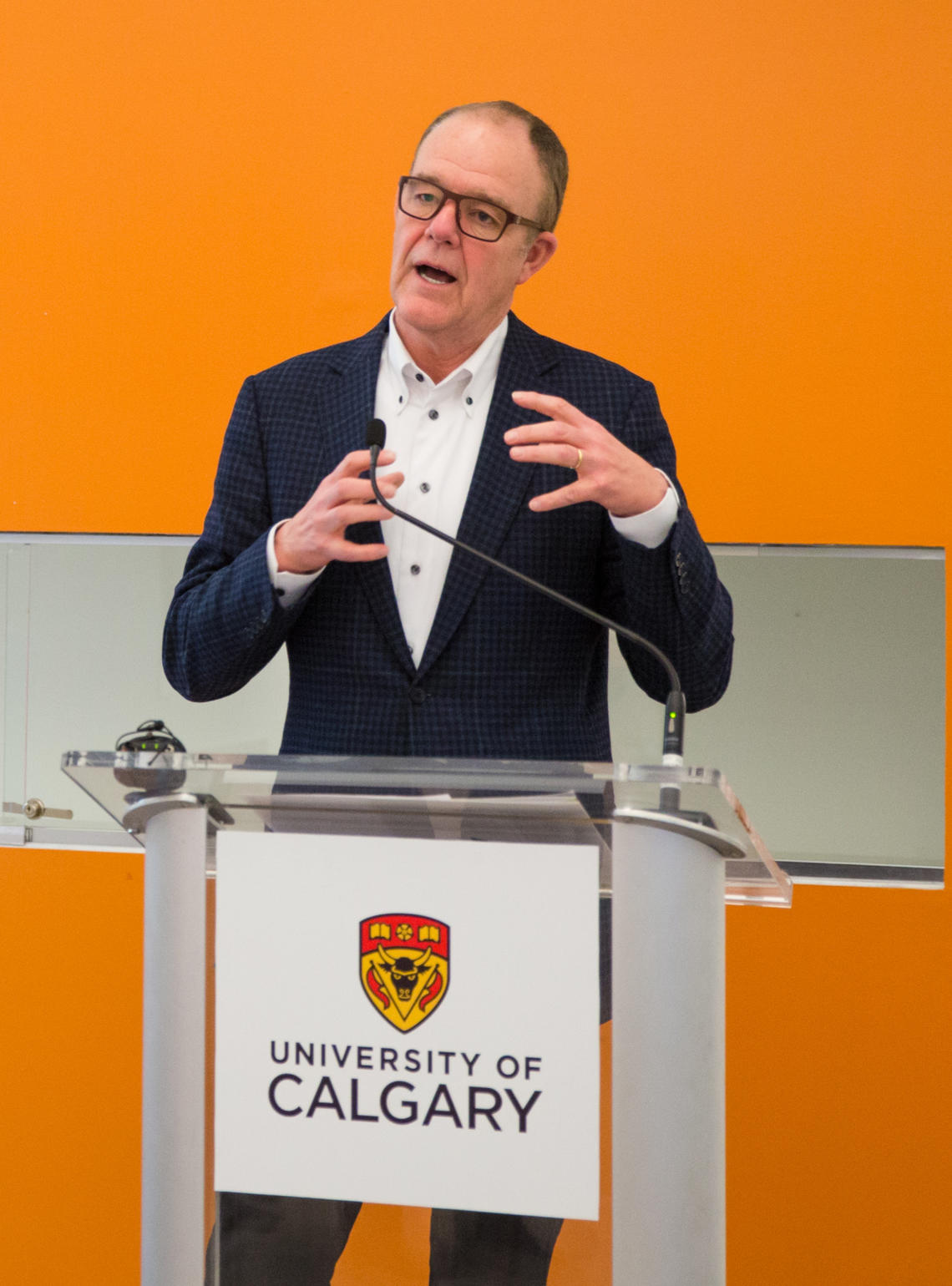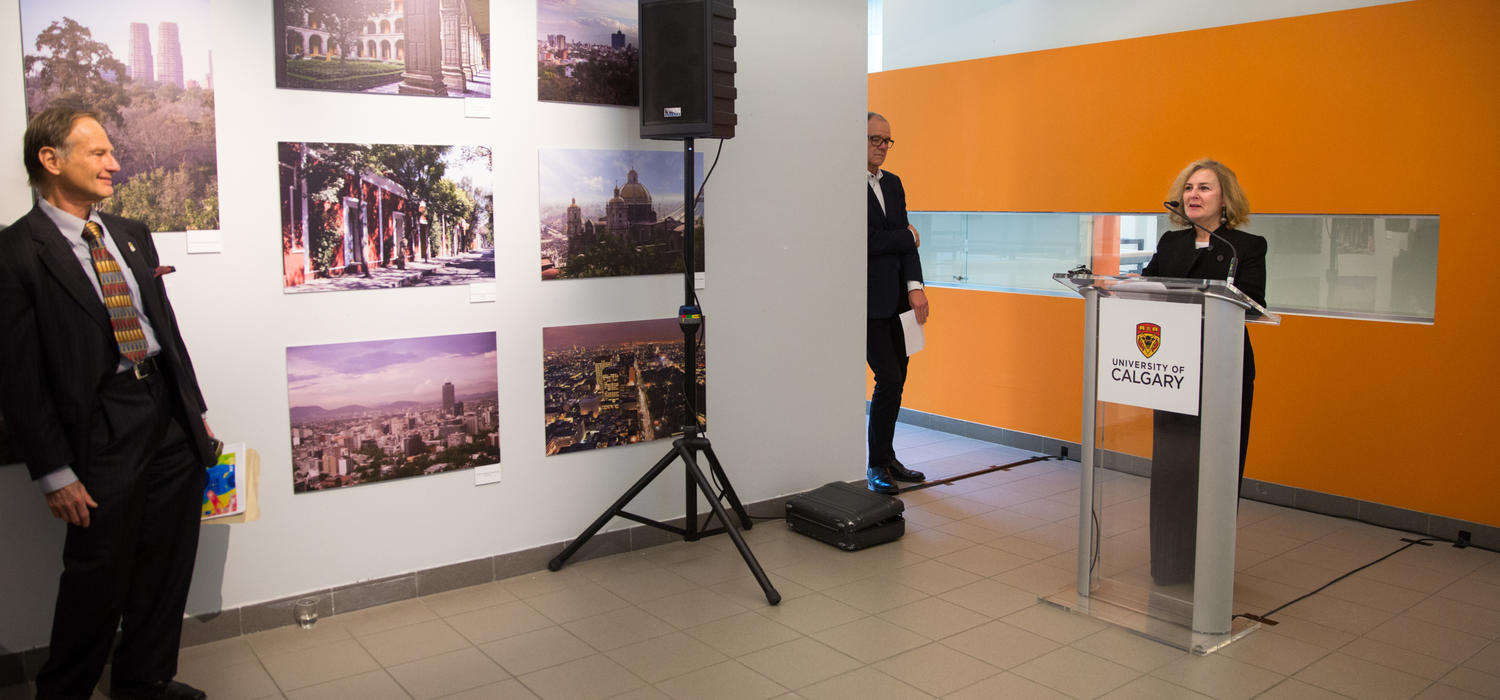
Interim Dean John Brown says the two certificates were designed for working professionals.
Riley Brandt, University of Calgary
Dec. 4, 2017

Designing smart and safe cities that represent the history and culture of our nation is integral in future development projects. The University of Calgary’s Faculty of Environmental Design is launching two new certificate programs that will allow architecture and building industry professionals to learn and respond to today’s unique city-building challenges.
Pictured above are University of Calgary professors Tom Keenan, left, and Sasha Tsenkova, right, speaking at an event where the new certificates were announced by the Faculty of Environmental Design.
The new post-baccalaureate certificate programs — Designing Smart and Secure Communities, and Built and Landscape Heritage — will allow practicing professionals to combine theoretical with real-world experience and learn how to design authentic, people-centred cities. Graduates of these programs will possess thoughtful, evidence-based, and integrated strategies and tools for enhancing the places we live, work, play, and learn.
“Certificate programs like the two we are announcing today allow our faculty to share advanced knowledge and expertise with practitioners in an efficient and effective manner,” says John Brown, interim dean of the Faculty of Environmental Design. “The topics were selected after consultation with our stakeholders and potential participants. Both of these programs address important unmet professional needs, and they were approved by Alberta’s Ministry of Advanced Education after rigorous review. Applications are now being accepted, and we look forward to welcoming the first participants early in 2018.”

Interim Dean John Brown says the two certificates were designed for working professionals.
Riley Brandt, University of Calgary
Designing Smart and Secure Communities
The Designing Smart and Secure Communities certificate is the first program of its kind to combine key concepts of community safety with leading-edge techniques for building intelligent communities. In addition to seminar-style study, participants will be mentored in a real-world project relevant to their individual interests.
“The concepts and technologies that make a community secure, including sensors, cameras and artificial intelligence, are the same ones that can help it become a smart community,” says Tom Keenan, professor and director of the post-baccalaureate certificate programs. “Yet, there is always a danger of creating an Orwellian world where privacy is threatened. This unique certificate gives participants the tools to achieve security and smartness, and the wisdom to balance them to create truly intelligent communities.”
Built and Landscape Heritage Certificate
The Built and Landscape Heritage certificate allows students to develop valuable skills related to heritage conservation. The proper treatment of heritage buildings and cultural landscapes is crucial as they represent history and culture, provide a sense of identity and continuity for future generations, and are a vital element of sustainable community development.
“We are delighted to launch our Built and Landscape Heritage certificate at a time when Canada celebrates its 150th anniversary. Propelled by a growing commitment to sustainability, heritage-led regeneration is transforming the urban fabric of Canadian cities and is creating a dynamic new civic identity,” says Sasha Tsenkova, professor of planning and international development. “The courses explore the nexus of Canadian heritage conservation and planning and introduce a unique blend of design strategies to preserve the heritage legacy of Canadian historic places. The support of the provincial government and the Alberta Heritage Foundation is instrumental for the success of this new learning opportunity.”
For more information on the certificates, admission requirements and applications visit the Faculty of Environmental Design website.